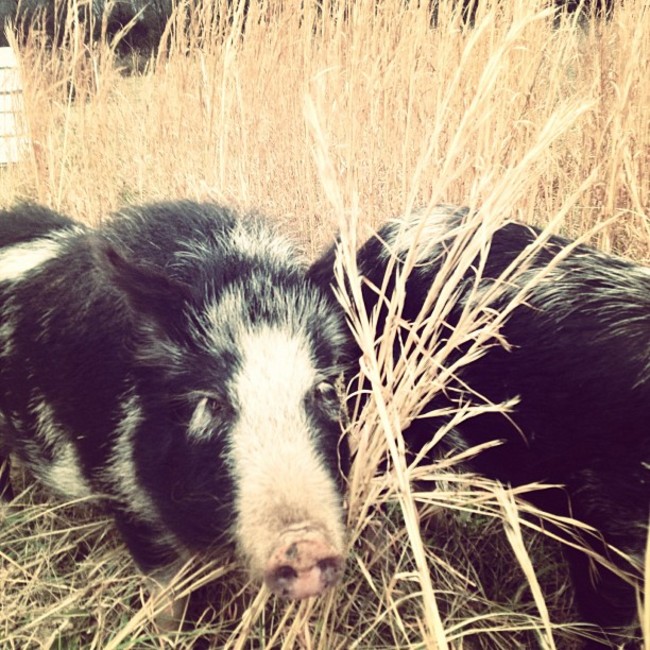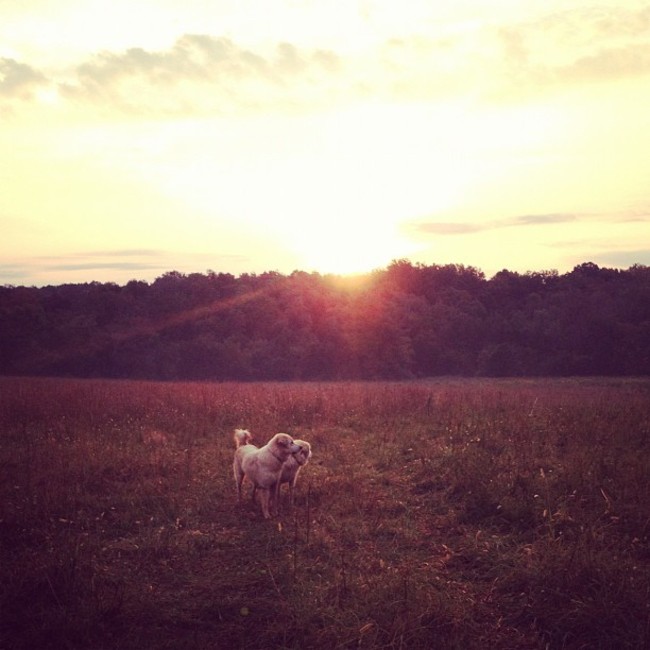I wrote about building our hoophouse for hay storage last fall as we prepared to move all of our hay into a new location. The hoophouse is 30' with 24' PVC hoops. It could comfortably hold 180-200 square bales at a time.
Erecting such a structure in Tennessee is a bit risky given the high wind speeds and frequency of tornadoes. Every time the winds pick up above 40 or 50 mph I get a little nervous and half-expect to see a giant white ball of shattered PVC and torn white plastic tumbling across the fields.
Last night's storm was a great test with wind speeds reaching a reported 105 mph only 15 minutes north of us. I don't think it got that bad where we are, but there were some mighty gusts that had us up from about 3am to 4:30am watching for tornadoes and monitoring the radar.This morning the hoop house was fine, however. It held steady and kept the hay dry.
Our animals also love the structure. Sometimes our LGD Sheba will climb the fence and find a nice place to nap inside. Our cat, Levon, also finds solace atop the hay bales. Nevat, the LGD puppy, can't terrorize him up there.
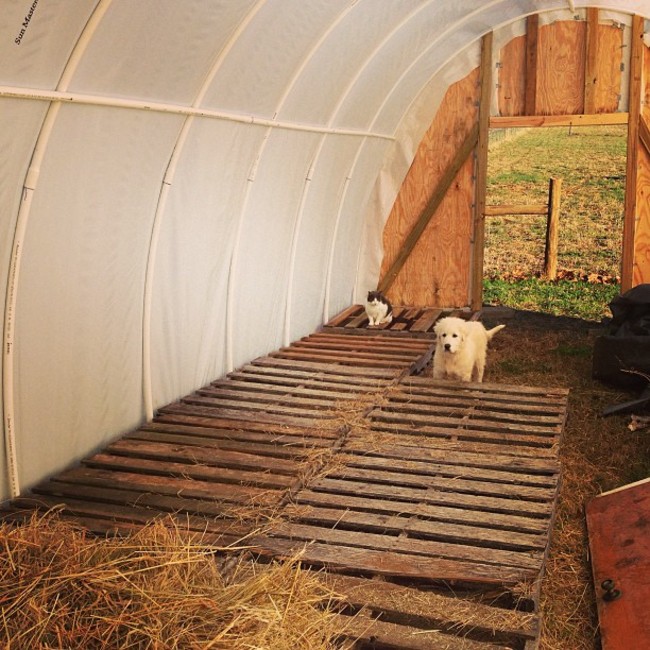 Nevat 'playing' with Levon while we reloaded our hay stash
Nevat 'playing' with Levon while we reloaded our hay stash
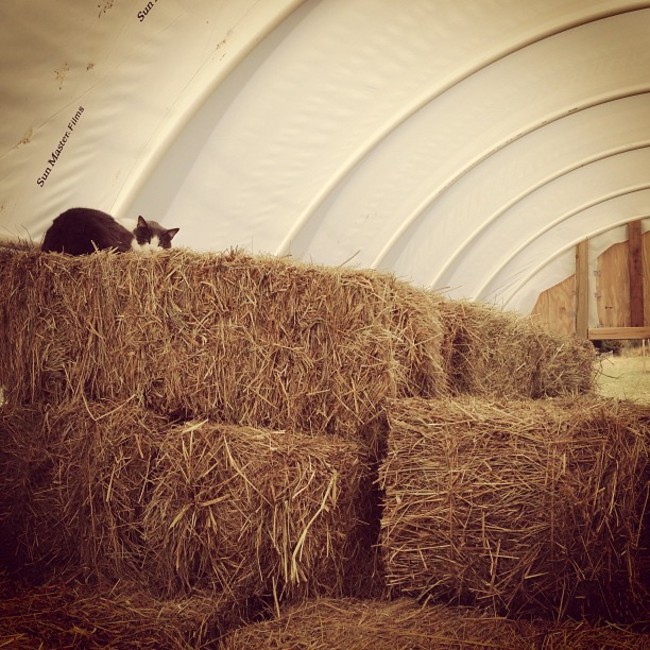 New hay bales loaded; Levon happily perched above the puppy's reach
New hay bales loaded; Levon happily perched above the puppy's reach
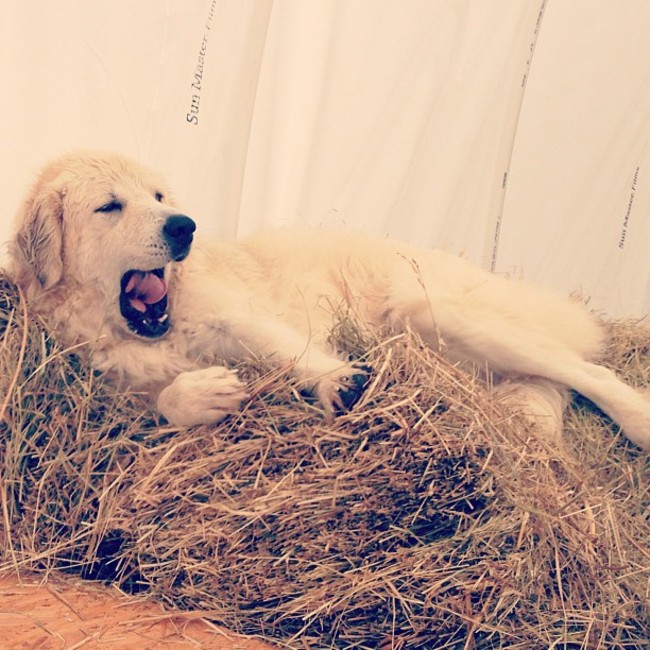 Sheba rents one of Levon's hay bales for the night
Sheba rents one of Levon's hay bales for the night
Thus far it's held up well, keeping our fingers crossed that it stays that way.


